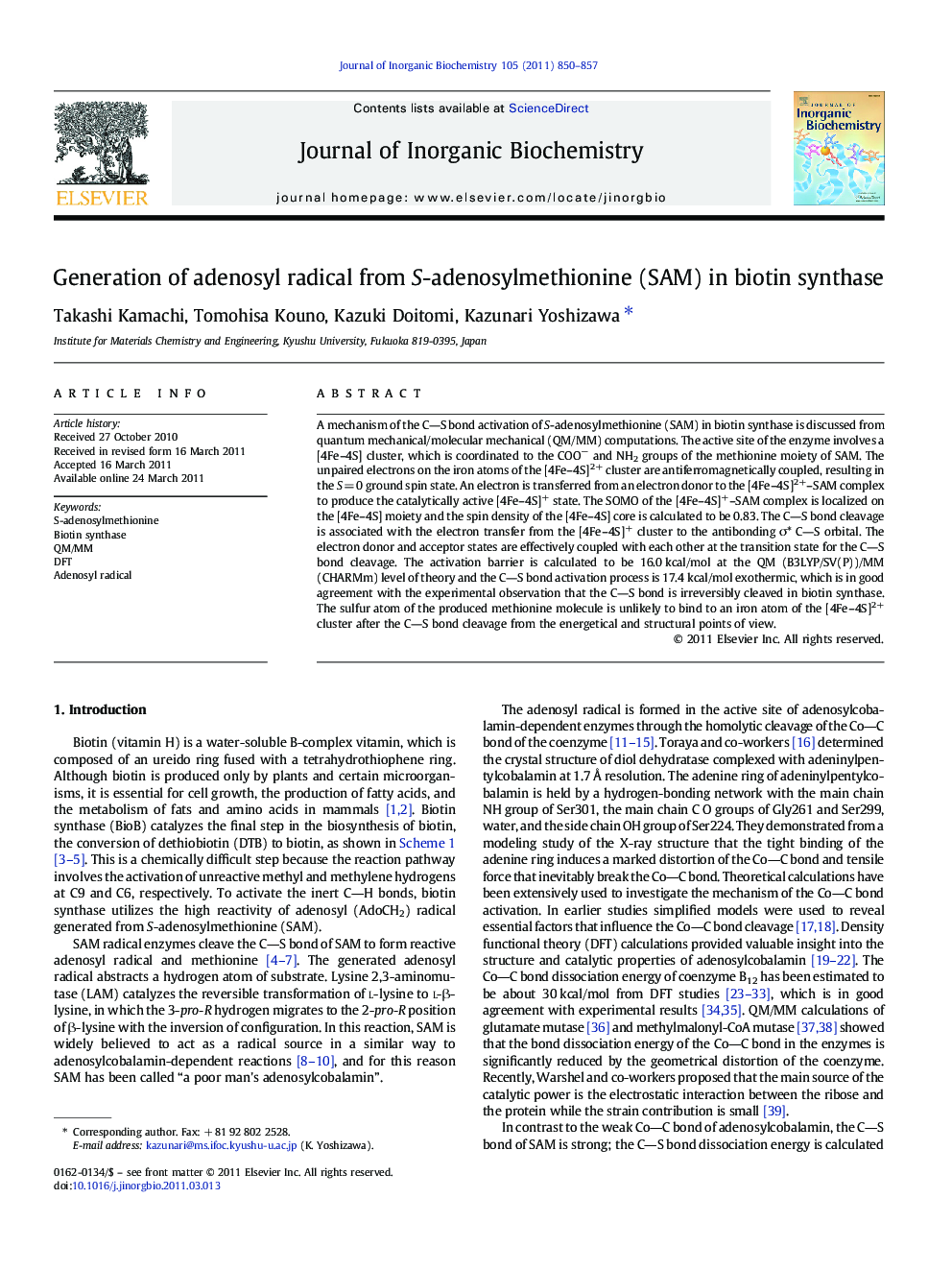| Article ID | Journal | Published Year | Pages | File Type |
|---|---|---|---|---|
| 1317916 | Journal of Inorganic Biochemistry | 2011 | 8 Pages |
A mechanism of the C―S bond activation of S-adenosylmethionine (SAM) in biotin synthase is discussed from quantum mechanical/molecular mechanical (QM/MM) computations. The active site of the enzyme involves a [4Fe–4S] cluster, which is coordinated to the COO− and NH2 groups of the methionine moiety of SAM. The unpaired electrons on the iron atoms of the [4Fe–4S]2+ cluster are antiferromagnetically coupled, resulting in the S = 0 ground spin state. An electron is transferred from an electron donor to the [4Fe–4S]2+–SAM complex to produce the catalytically active [4Fe–4S]+ state. The SOMO of the [4Fe–4S]+–SAM complex is localized on the [4Fe–4S] moiety and the spin density of the [4Fe–4S] core is calculated to be 0.83. The C―S bond cleavage is associated with the electron transfer from the [4Fe–4S]+ cluster to the antibonding σ* C―S orbital. The electron donor and acceptor states are effectively coupled with each other at the transition state for the C―S bond cleavage. The activation barrier is calculated to be 16.0 kcal/mol at the QM (B3LYP/SV(P))/MM (CHARMm) level of theory and the C―S bond activation process is 17.4 kcal/mol exothermic, which is in good agreement with the experimental observation that the C―S bond is irreversibly cleaved in biotin synthase. The sulfur atom of the produced methionine molecule is unlikely to bind to an iron atom of the [4Fe–4S]2+ cluster after the C―S bond cleavage from the energetical and structural points of view.
Graphical abstractBiotin synthase catalyzes the cleavage of the C―S bond of S-adenosylmethionine (SAM) to form reactive 5′-deoxyadenosyl radical and methionine. We have investigated the electronic structure of the [4Fe–4S]+/2+ cluster in the active site and have elucidated the mechanism of the C―S bond cleavage from QM/MM computations.Figure optionsDownload full-size imageDownload as PowerPoint slide
